Have you ever seen the falls run dry? Yes, it happened twice.
March 29th, 1848, the falls ran dry due to in the upper Niagara River for about 20 hours.
June 1969, U.S. engineers diverted the flow of the Niagara River away from the American side of the falls for several months.
When the falls run dry, it looks like a desert. Recently, Russ Glasson stumbled across the pictures, which were taken by his in-laws, and had been left in an old shoebox in their garage for over four decades. Here below is the news and pictures about this “new discovery”.
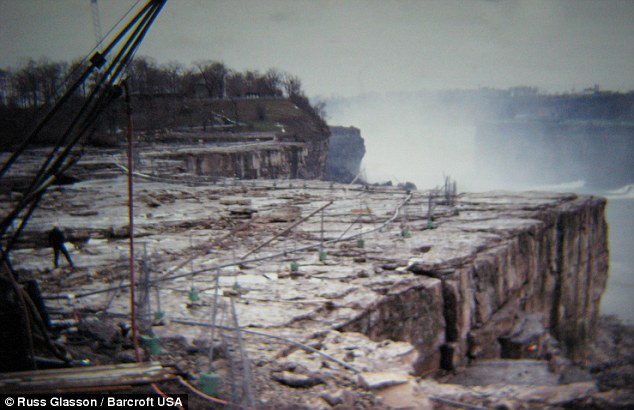
Stark: A completely dry Niagara Falls has never been seen before or since the six months in July 1969 when U.S. engineers set about restructuring the American side of the twin landmark
The news is quoted from Daily Mail. Click here to see more!
It’s taken 41 years, but a previously unseen set of photos of the mighty Niagara Falls reduced to nothing more than a barren cliff-top have finally surfaced.
The stark images reveal North America’s iconic – and most powerful – waterfall to be almost as dry as a desert.
In June 1969, U.S.
engineers diverted the flow of the Niagara River away from the American side of the falls for several months.
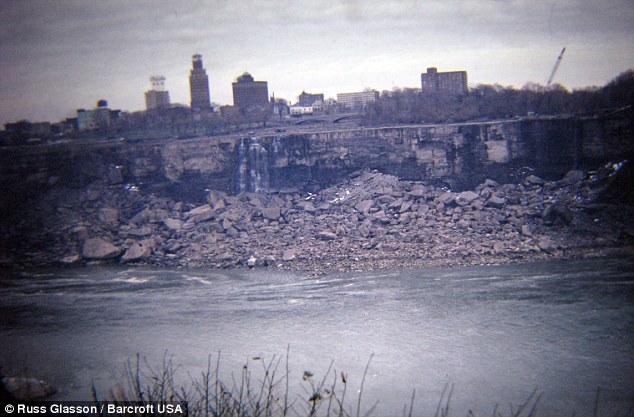
Mountain of rubble: This set of photos only recently came to light when Russ Glasson found them in a shoebox in his in-laws’ Connecticut garage
Their plan was to remove the large amount of loose rock from the base of the waterfall, an idea which they eventually abandoned due to expense in November of that year.
During the interim, they studied the riverbed and mechanically bolted and strengthened a number of faults to delay the gradual erosion of the American Falls.
The team, made up of U.S. Army Corp of Engineers, blew up their temporary dam in November 1969 and six million cubic feet of water once again thundered over the falls’ sides every minute.
Now, after lying unseen for more than four decades, a set of images showing the eerie calm at the American Falls that year have been unearthed by a man from Connecticut.
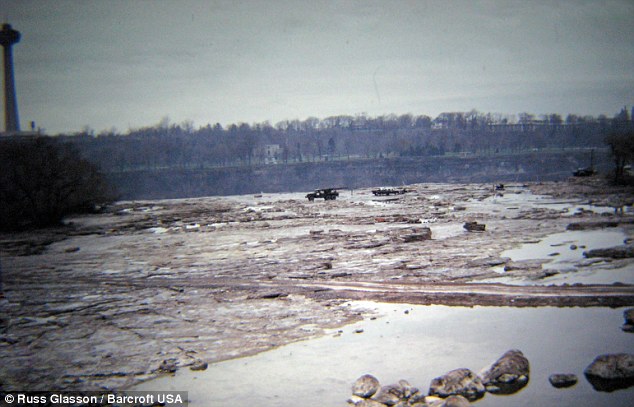
Plan: The U.S. Army Corp of Engineers studied the riverbed and mechanically bolted and strengthened a number of faults to delay the gradual erosion of the American Falls
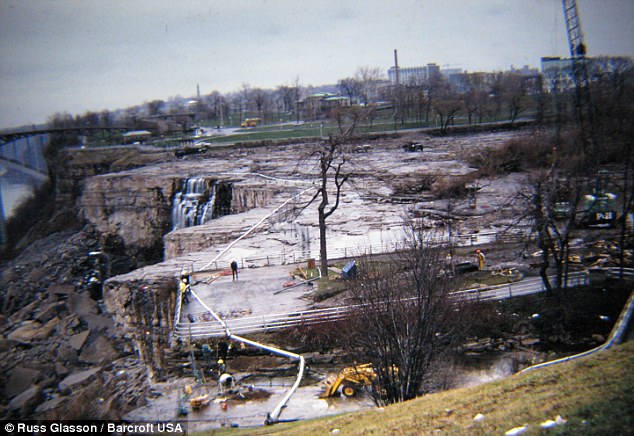
Historical moment: In order to stop the Niagara River running over the American Falls, engineers constructed a dam consisting of 27,800 tons of rock, stopping the water for the first time in 12,000 years
Russ Glasson recently stumbled across the pictures, which were taken by his in-laws, and had been left in an old shoebox in their garage for over four decades.
Mr Glasson said: ‘My in-laws took these pictures during the six months through June to November that the Army was working to improve the health of the American Falls.’
Two rockslides from the plate of the falls in 1931 and 1954 had caused a large amount of rock to be collected at the base.
In 1965, reporters at local newspaper Niagara Falls Gazette revealed that the America Falls would eventually cease to flow and stop altogether if the rocks were not removed.
Four years later, the U.S. Army Corp of Engineers were charged with de-watering the falls to clean the river bed and to remove any loose rock at the bottom of the falls.
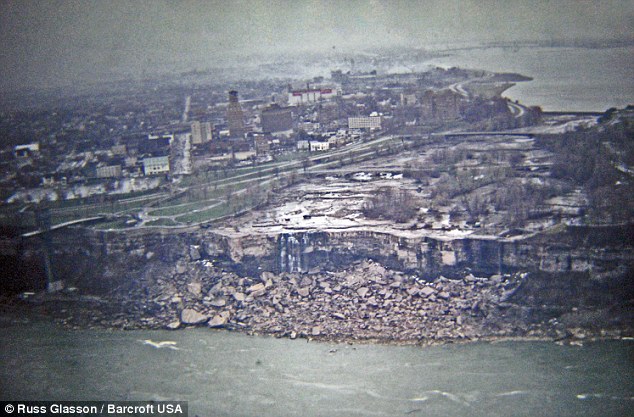
Gradual deterioration: Two rockslides from the plate of the falls in 1931 and 1954 had caused a large amount of rock to be collected at the base
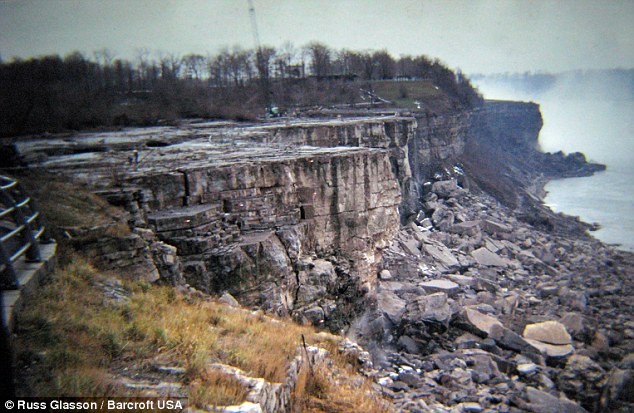
Eerie calm: The temporary dam can be seen in the top-right of this photograph
To achieve this the army had to build a 600ft dam across the Niagara River, which meant that 60,000 gallons of water that flowed ever second was diverted over the larger Horseshoe Falls which flow entirely on the Canadian side of the border.
The dam itself consisted of 27,800 tons of rock, and on June 12, 1969, after flowing continuously for over 12,000 years, the American Falls stopped.
Over the course of the next six months thousands of visitors flocked to the falls to witness the historic occasion.
Once the engineers had removed the collected rocks from the falls base and made geological testing to make safe the rest, the falls were re-watered on November 25 in front of 2,650 onlookers.
You’d think they would clean up all that rubble at the bottom of the falls.
You would think that, but if you read the article you would have seen that it was not feasible to do – to move that much rubble probably would have taken years – and where would they take it to? Barge loading may have been possible but I’m not sure on the channel depth up to that point. Hoisting it all and carting it away would have cost millions, and that’s in 1969 dollars – I know, we piss that away like it is nothing these days.
They did not clean up all the rubble because they realized that would hasten the continuing erosion that the falls would experience. I read this on another story about the falls being stopped in 69. But the falls stopped in 48 according to another story, due to ice blocking the exit of Lake Erie.